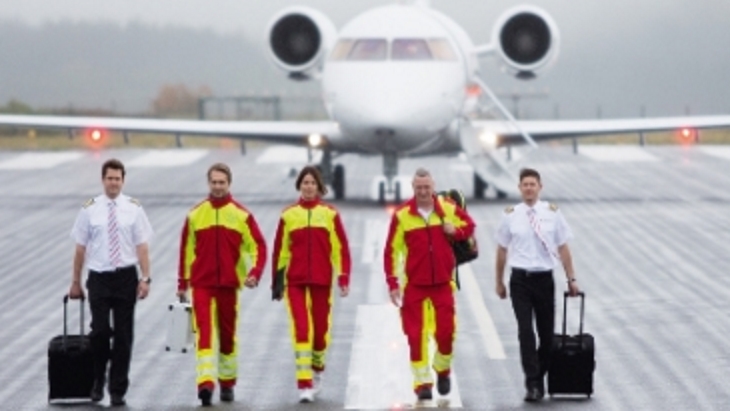Compare costs
Average cost of treatment in key countries
Include indicative costs for treatment, travel, insurance and accommodation
Get a quote
1. Complete the enquiry form
2. Select countries of interest
3. Providers respond directly
ITIJ Journal: 2016 Air Ambulance Review
Cycling Accident: Patient with Polytrauma on Ventilation
Air Ambulance Mission from Capetown (South Africa) to Vienna (Austria)
Christina B, a best-ager female tourist, had been looking forward to her South African holiday for months, but the pleasure of her vacation ended rapidly. While exploring Capetown’s busy streets on bicycle, she got seriously hit by a passing car.
Christina suffered a severe polytrauma with pneumothorax, lung contusion, a serial rib fracture, facial fractures and a traumatic brain injury (TBI). She lost consciousness and was rushed to an excellent hospital facility in Capetown where a subdural and subarachnoid haematoma was diagnosed. After stabilisation she underwent a craniotomy with an immediate evacuation of the intracranial haematoma and thereafter was admitted to the intensive care ward. Several days later, a tracheotomy was performed to improve respiratory care.
Due to the expected prolonged treatment and recovery period of at least several months, Christinas’s insurance company decided to have her repatriated to Austria, where her family lived. Two and a half weeks after her hospitalisation and numerous surgeries, she was stable enough to travel as an intensive care patient via air ambulance.
Air Alliance Medflight’s alarm centre team carefully planned the flight route from Vienna to South Africa which included two fuel stops. Special attention was paid to the fact that Christina had suffered a severe lung and brain injury resulting in residual air in these areas that might expand during flight and severely affect her organ functions. Fortunately, the treating institution had a very high standard of care that enabled the corresponding medical doctor from the insurance company to select the best appropriate time point for repatriation. Otherwise, a flight at sea level would have been mandatory to avoid the risks of expanding air. Sea level flights have a substantial impact on flight planning because the airplane needs more fuel at lower cruising levels and more fuel stops have to be planned. That affects duty times and requires more crew changes to stay within the legally required framework.
The Medflight medical team consisted of a Consultant Anaesthetist and a senior ICU nurse, both with considerable experience in clinical and preclinical intensive care and advanced trauma life support. Immediately upon arrival in Capetown the team visited the hospital and reviewed Christina’s latest condition. Due to excellent communication between the hospital, the medical doctor from the insurance company and the Medflight doctor, the team identified exactly the previously reported findings. It was agreed that another CT scan of the lung and brain should be performed to finally confirm that all remaining air following the trauma had been resorbed and that a sea level flight was not necessary. After discussing the exact time of departure from the hospital for the next day, the team went to the hotel to get some rest. The next day, after a timely arrival at the hospital for patient collection and another thorough handover, Christina was connected to the Medflight transport medical equipment and securely transferred to the airport by ground ambulance. Once there, the experienced Commander-in-Chief and First Officer helped get Christina aboard and were then ready for take-off. Exact planning from the alarm centre enabled transfers with no waiting times.
During the flight, the patient was extremely carefully monitored. She was given intravenous infusions and drugs to keep her in a deep sedation free from pain. Christina´s condition was stable throughout the whole flight, however the total flight time of 11 hours required the same equipment as in a regular intensive care ward, including invasive and noninvasive blood pressure monitoring, ECG, SpO2, intracranial pressure monitoring, motor pumps for exact drug administration, and a blood gas analyser.
The flight progressed without delays through to Vienna, where the patient was delivered to her receiving hospital. The insurer’s alarm centre had already arranged admission to a bed in the Intensive Care Ward. Despite the severity of her condition, the patient’s prognosis had improved. Being back home in a familiar environment would help Christina substantially on her way to recovery.
Eva Kluge is the Director of Sales and Business Development of Air Alliance Medflight, based in Germany, with a branch office in Vienna / Austria. Eva is an expert in healthcare, medical assistance and aeromedical transportation. For the past 20 years she has worked in executive roles for renowned players in the industry. She holds a degree in Healthcare and Social Management and speaks fluently 5 languages, among them Arabic.

